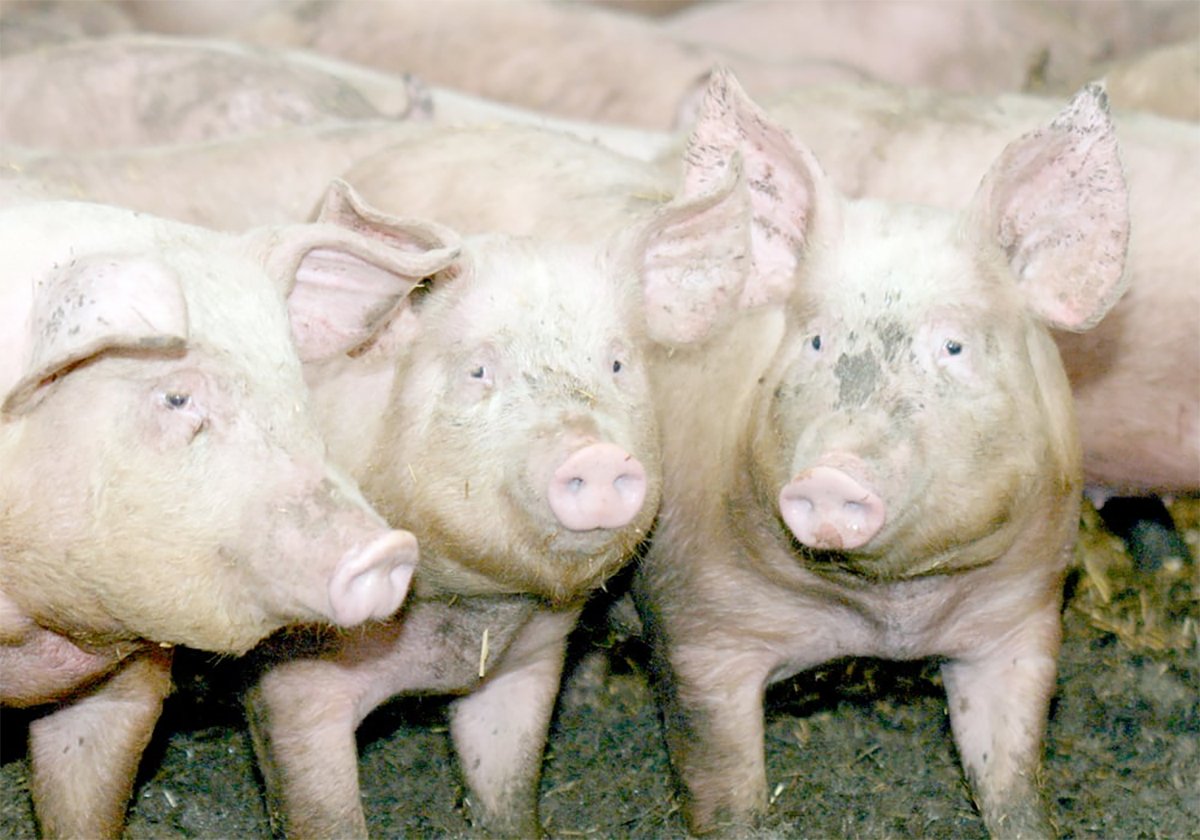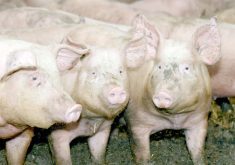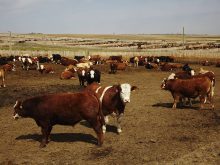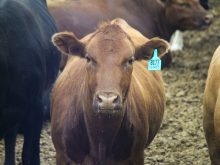Home, home on the range.
Those words normally conjure up a warm, nostalgic feeling in the pit of a cattle producer’s stomach.
But if the range is a community pasture and the producer’s cattle come home open and diseased, then nostalgia can quickly give way to anger and frustration.
Eugene Janzen, assistant dean of clinical veterinary practice at the University of Calgary, says the community pasture program provides an indispensible service for Canadian cattle producers.
Each year, more than 3,100 producers place nearly 220,000 cattle in the program.
Read Also

The Western Producer Livestock Report – November 13, 2025
Western Producer Livestock Report for November 13, 2025. See U.S. & Canadian hog prices, Canadian bison & lamb market data and sales insights.
However, the system is not perfect and there are issues that could undermine the program if they are not addressed.
“These are issues that are common to community pastures and pasturing systems,” said Janzen, who assessed the health of the community pastures program at a seminar for producers and community stock handlers and identified the Top 10 threats to community pastures.
“They are sorts of things that could (weaken the program and) threaten that way of life.”
10: New demands on the land
Janzen said land in the commun-ity pastures program is no longer the exclusive domain of cattle producers.
Government owned grazing land is now frequented by hunters, campers, hikers and other rec-reational users.
A growing cultural awareness of environmental issues is also placing limitations on where cattle can graze and water.
Society’s emphasis on ecological preservation and maintaining wildlife habitat will continue to restrict use of wetlands, creeks and grasslands.
9: Water-borne parasites
Every pasture has parasites.
Watering holes, particularly those with stagnant or poor quality water, are a common source.
In the future, changing weather patterns may also lead to the introduction of new parasites, Janzen said.
Transmission of pests and diseases from deer, elk and moose to grazing cattle is also a concern.
“Some of those ungulates will share their bugs with cattle,” he said.
“We do see diseases like liver fluke in dead livestock.”
8: Grazing sources
Good pasture managers should be wary of range conditions and be cognizant of what cattle are grazing.
Some pastures use alternate grazing sources early in the season to allow the pasture more time to green.
Grazing the wrong material can have deadly consequences. Green ryegrass, for example, has been associated with photosensitization, a condition in which an animal’s skin becomes irritated and sensitive to sunlight.
Rotating cattle from one part of the pasture to another can also cause grief, depending on the types of grasses and plants that are prevalent.
7: Sexually transmitted diseases
The community pasture program uses thousands of bulls to breed tens of thousands of cows each year.
When dealing with that many breeding animals, the threat of acquiring STDs is significant.
“It’s pretty hard to (use) a communal grazing system without worrying about sexually transmitted disease,” Janzen said.
“The two that we’re most con-cerned about are trichomoniasis and campylobacter.”
Pasture managers should test bulls early in the year to ensure they are entering the breeding season disease free.
6: Insufficient bulls or bulls in poor condition
Janzen said it’s easy to calculate how may bulls are needed in a pasture, but if the bulls are in poor physical condition, lack virility or have poor libido, then problems arise and cows will come home open.
In a community grazing system, tests that determine the percentage of viable sperm may be less important than tests that determine a bull’s libido, Janzen said.
Australian researchers popularized a libido test where a cow is confined and a bull is allowed to mate with it repeatedly.
“One of the things that we get out of that is the identification of those bulls that are not interested in breeding,” Janzen said.
“The Australians have been able to show, very clearly, that the number of times that bull shows interest in that cow … is directly related to how many cows it can breed.”
5: Lameness
Lameness is a key impediment to breeding success.
It can be caused by various factors including cracked hoofs, foot rot, entanglement in baler twine or wire and exotic diseases such as fescue foot.
Fescue foot, or fescue lameness, is a condition that many cattle handlers have trouble recognizing.
If bulls have a corn cob tail, where the switch of the tail has fallen off, they may also have lesions on the bottoms of their feet.
The condition, common to pastures with endophyte infected fescue or ergot, may arise every few years.
To reduce problems associated with bull lameness, pasture managers should monitor bulls closely, identify those with poor mobility, arrive at a clinical diagnosis and treat them accordingly.
4: Young calf diseases
One of the most time consuming tasks facing pasture managers and stock handlers is tending to young, sick calves.
Calves often arrive in poor condition and their health deteriorates further because of stress that occurs during transportation and after arrival.
“That’s a good example … of where (community pasture staff) have to mop up the floor,” Janzen said.
“The farmer turned the tap on … probably by failing to ensure that his calves got enough colostrum … but by the time they get to the pasture, it becomes your task to clean that up.”
Janzen said calves up to three months of age are most prone to illness on the range.
Predation is also a major concern among young calves.
Normally, a calf that has begun grazing on its own is unlikely to be targeted by coyotes or wolves.
However, predation can occur at any time.
3: Increased livestock density
In a community pasture, large numbers of cattle are often confined in a small space for pregnancy checking, branding or other tasks that require corralling.
Confining cattle in a small space stresses the animals and can facilitate the spread of viruses such as pink eye, bovine viral diarrhea, pneumonia and other mycoplasmas.
“When you get cattle together, then you facilitate the opportunity for diseases to spread from one animal to another,” Janzen said.
“I’ve been at some pastures where we were worried about a pink eye outbreak so we rounded up the entire herd and put them in a dusty corral. I suspect that we probably created more damage than we prevented because of how we handled the cattle.”
Even overcrowding for water or shade can promote disease transmission, he said.
Minimize operations that require penning, and avoid penning cattle the night before dispersal.
Never keep large numbers of cattle in tightly confined spaces overnight.
2: Compromised biosecurity
Unhealthy cows and bulls that come into a community pasture have the potential to affect the entire herd.
“Compromised biosecurity can mess up our best laid plans so easily.”
Janzen said community pastures in western Saskatchewan had a significant mange problem several years ago.
“We introduced cattle with mange into a community pasture and we created a problem,” he said.
The solution is simple – keep unhealthy cattle out. Cattle that show symptoms of disease, trauma, parasitic infections, lick lesions or abnormal behaviour should be separated and sent home.
“Just because a cattle producer is a good patron, don’t let his unhealthy cows into the pasture.”
1: Incorrect take-in and take-out dates
Deciding when to stock the pasture and when to send cattle home can be difficult, Janzen said.
Environmental conditions must be considered.
A cold, late spring means pastures will be delayed. Under those conditions, stocking too early can damage the range, compromise the reproductive performance of cows and lead to herd health issues.
Drought conditions are also related to a variety of diseases including anthrax and phytotoxicity.
“I appreciate how difficult this is when there are people banging on your door wanting to farm. They want those cows out of their hair and in the community pasture,” Janzen said.
Other environmental conditions, such as abundant rain, snow, lightning and prolonged cold spells, can also have deadly consequences.
In some cases, saturated soil around a watering station will conduct an electrical current, essentially shocking cattle as they approach for water.
“We have very little control over the weather but it’s something we have to manage for just the same.”















